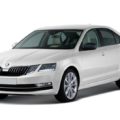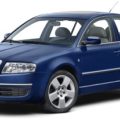Rapid prototyping service china manufacturer — prototype company
Startprototyping is the most successful rapid prototyping company with the best customer base at this time. We are happy to provide the best in class features of rapid prototypes by using 3d printing, cnc prototyping and polyurethane vacuum casting.
We use more than a few metals and hard plastics along with the latest technology for producing the first-class CNC machined prototypes. We prefer pmma, abs, Derlin, Nylon, titanium alloy, steel, brass and other high quality materials for producing the most outstanding prototypes.
Rethink rapid prototyping | 3d systems
While additive manufacturing enables the production of more prototypes within a given time, it can reduce the amount of prototypes needed by enabling the industrial designer or engineer to more quickly dial in to a finished design. The digital design workflow also enables CAD data to be shared through a distributed network, where it can be quickly printed in different locations, enabling greater understanding of the design among teams and a faster knowledge turn. As knowledge improves so there can be faster, better and resultingly fewer iterations.
Rapid prototyping can reduce costs of product development and design by tens or hundreds of thousands of dollars through quick-turn iteration, reduced man-hours and a significantly reduced cost of prototyping through additive.
Summary
Prototype models help design teams make more informed decisions by obtaining invaluable data from the performance of, and the reaction to, those prototypes. The more data that is gathered at this stage of the product development cycle, the better the chances of preventing potential product or manufacturing issues down the road.
What is the best way to get a prototype made? The answer depends on where you are in your process and what you are trying to accomplish. Early in the design process, when the ideas are flowing freely, concept models are helpful. As the design progresses, a prototype that has the size, finish, color, shape, strength, durability, and material characteristics of the intended final product becomes increasingly important.
If your prototype can faithfully represent the attributes of the end-product, it is by definition functional. These requirements often include such things as material properties (e.g., flame resistance), dimensional accuracy for fit-up with mating parts, and cosmetic surface finishes for appearance.
If your prototype design can be repeatedly and economically produced in a manner that supports the requirements of the end product, it is by definition manufacturable. These requirements include the ability to maintain the functionality of the design as described above, keep the piece-part cost below the required level, and support the production schedule.
Finally, even if your prototype design is functional and manufacturable, it doesn’t mean anyone will want to use it. Prototypes are the only true way to verify the viability of the design in this sense. If your design can also pass the challenges associated with market trials (e.g., trade show displays, usability testing) and regulatory testing (e.g., FDA testing of medical devices), you’re well on your way to a successful product launch.
Как осуществляется прототипирование изделий?
Наиболее современным методом создания прототипа является печать на 3D-принтере. По-сути, прототипирование изделий 3d-печатью представляет собой послойное построение физической конструкции на основе разработанной математической модели. Среди преимуществ технологии: наглядность, сокращение сроков подготовки производства, а также уменьшение затрат на конструирование и дизайн.
Отметим, что если у вас уже есть образец детали, то наши специалисты могут использовать его в качестве мастер-модели при производстве силиконовой оснастки для метода вакуумного литья, который эффективен для получения небольших партий деталей, благодаря скорости и относительной простоте изготовления силиконовых форм.
Применяемые технологии 3d-печати
Зачастую вместо более правильного и точного термина Rapid Prototyping (Быстрое прототипирование) употребляют понятие 3d-печать. На сегодняшний день существует большое количество технологий объемной печати, но во всех заложен один и тот же принцип послойного наращивания. Ниже приведены описания основных технологий 3д-печати, получившие самое широкое распространение.
SLA — Stereo Lithography Apparatus, стереолитография
SLA — это лазерное прототипирование. Технология подразумевает использование в качестве модельного материала специального фотополимера – светочувствительной смолы. Рабочим инструментом в данном процессе выступает ультрафиолетовый лазер, который последовательно переводит поперечные сечения модели на поверхность емкости со светочувствительной смолой.
Жидкий пластик затвердевает только в том месте, где прошел лазерный луч. Затем новый жидкий слой наплывает на затвердевший слой, и новый контур намечается лазером. Процесс повторяется до завершения построения модели. Стереолитография – наиболее распространенная RP-технология.
Она охватывает практически все отрасли материального производства от медицины до тяжелого машиностроения. SLA-технология позволяет быстро и точно построить модель изделия практически любых размеров. Качество поверхностей зависит от шага построения. Современные машины обеспечивают шаг построения 0,1…0,025 мм.
Стереолитография дает наилучший результат при создании мастер-моделей для последующего изготовления силиконовых форм и литья в них полимерных смол, а также ювелирных мастер-моделей.SLS — Selective Laser Sintering, селективное лазерное спекание
Лазерное прототипирование применяется не только с жидкими основами.
Метод SLS позволяет создавать копии на основе порошкообразных компонентов. Согласно этому процессу модели создаются за счет эффекта спекания при помощи энергии лазерного луча. В данном случае, в отличие от SLA-процесса, лазерный луч является не источником света, а источником тепла.
Попадая на тонкий слой порошка, лазерный луч спекает его частицы и формирует твердую массу, в соответствие с геометрией детали. В качестве материалов используются полиамид, полистирол, песок и порошки некоторых металлов. Существенным преимуществом SLS-процесса является отсутствие так называемых поддержек при построении модели.
В процессе SLA при построении нависающих элементов детали используются специальные поддержки, предохраняющие свежепостроенные тонкие слои создаваемой модели от обрушения. В SLS-процессе в таких поддержках нет необходимости, поскольку построение ведется в однородной массе.
После построения модель извлекается из массива порошка и очищается. Модели из полистирола предназначены для получения отливок методом «выжигаемых моделей». Наиболее популярным модельным материалом является порошковый полиамид. Этот материал применяется для создания макетов, масштабных копий, функциональных моделей, т. е. моделей способных выполнить свою функцию, как деталь машины или устройства. Например, детали облицовки салона автомобиля или декоративные элементы кузова.
FDM — Fused Deposition Modeling, моделирование методом наплавления
При FDM-процессе (послойном наложении расплавленной полимерной нити) термопластичный моделирующий материал, диаметр которого составляет 0,07 дюйма (1,78 мм), подаётся через экструзионную (выдавливающую) головку с контролируемой температурой, нагреваясь в ней до полужидкого состояния.
Выдавливающая головка наносит материал с высокой точностью и очень тонкими слоями на неподвижное основание. Последующие слои также ложатся на предыдущие, солидифируются (отвердевают), соединяясь друг с другом. Главным недостатком метода является недостаточно гладкая поверхность создаваемой детали.
Этапы прототипирования изделий
Rapid Prototyping включает в себя следующие стадии:
1. Математическая модель детали 2. Прототип, изготовленный по технологии SLA
3. Пример готовой детали корпуса.
Полностью соблюдая нормы на указанных этапах 3d-прототипирования по любому избранному методу, наша компания гарантирует оперативность и высокое качество конечного продукта.
Definitions
Definitions vary and may differ at different organizations, but the definitions below may be used as a starting point.
Concept Model: a physical model made to demonstrate an idea. Concept models allow people from different functional areas to see the idea, stimulate thought and discussion, and drive acceptance or rejection.
Prototyping AttributesSpeed: turnaround time to convert a computer file into a physical prototype
Appearance: any visual attribute: color, texture, size, shape, etc.
Assembly/Fit Testing: making some or all of the parts of an assembly, putting them together, and seeing if they fit properly. At the gross level, this checks for design errors, such as placing two tabs at 2 in. spacing and the mating slots at 1 in. spacing.
Prototyping AttributesForm: the shape of the part: features and size
Fit: how the part mates with other parts
Functional Testing: seeing how a part or assembly will function when subjected to stresses representing what it will see in its actual application.
Prototyping AttributesChemical Resistance: resistance to chemicals including acids, bases, hydrocarbons, fuels, etc.
Mechanical Properties: strength of the part measured by tensile strength, compressive strength, flexural strength, impact strength, tear resistance, etc.
Electrical Properties: interaction of electrical fields and the part. This may include dielectric constant, dielectric strength, dissipation factor, surface and volume resistance, static decay, etc.
Thermal Properties: changes in mechanical properties that occur with changes in temperature. These may include thermal expansion coefficient, heat deflection temperature, vicat softening point, etc.
Optical Properties: ability to transmit light. May include refractive index, transmittance, and haze.
Life Testing: testing properties that may change with time and that are important for a product to remain functional throughout its expected life. Life testing often involves subjecting the product to extreme conditions (e.g., temperature, humidity, voltage, UV, etc.) to estimate in a shorter period of time, how the product will react over its expected life.
Prototyping AttributesMechanical Properties (fatigue strength): ability to withstand large numbers of load cycles at various stress levels.
Aging Properties (UV, creep): ability to withstand exposure to ultraviolet light with an acceptable amount of degradation; ability to withstand extended applications of forces to the part with acceptable levels of permanent deflection.
Regulatory Testing: testing specified by a regulatory or standards organization or agency to assure parts are suitable for a particular use such as medical, food service or consumer application. Examples include Underwriters Laboratory (UL)
Prototyping AttributesFlammability Properties: the resistance of a resin or part to ignition in the presence of a flame.





